E-Commerce Mobile App Development Cost in 2021
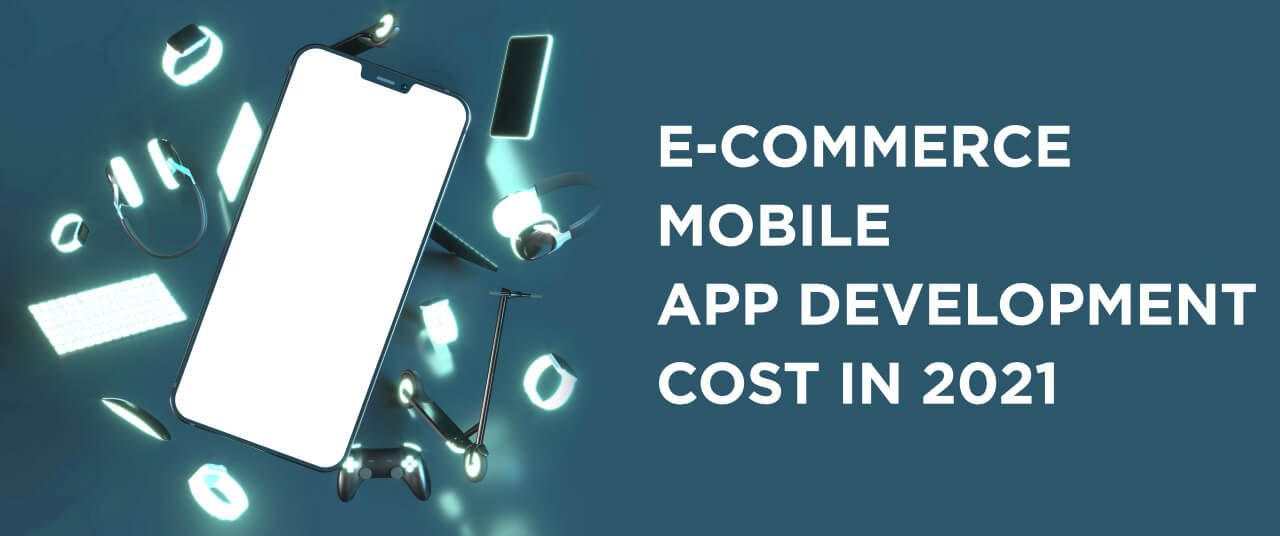
Covid-19 challenges the e-commerce world but also drives its popularity. Due to lockdowns and store closures, more consumers are turning to online services and goods. Consumers have grown more comfortable with the idea of online shopping, as it is convenient and offers the benefit of contactless payments.
If you want to grow your business, engage new customers, and increase sales, the importance of having a mobile e-commerce solution should be obvious. But what does e-commerce mobile app development cost? It depends on many factors, and you get what you pay for.
In this article, we outline factors that influence app development cost, identify trends you need to keep your eye on, and answer the question of how much it costs to develop an e-commerce mobile app.
Shall we begin?
Here’s What We’ll Cover
- The State of the E-Commerce Market
- What Are the Benefits of E-Commerce App Development?
- Decide Which E-Commerce Trends Make Sense for Your Business
- Custom E-Commerce Solution vs. Vendor-Based: Pros and Cons
- What Influences the Cost of E-Commerce Mobile App Development?
- How Much Does E-Commerce App Development Cost in 2021?
The State of the E-Commerce Market
Where is e-commerce now? And what’s coming in 2021?
According to data from , the global e-commerce market had sales reaching $4.13 trillion in 2020.
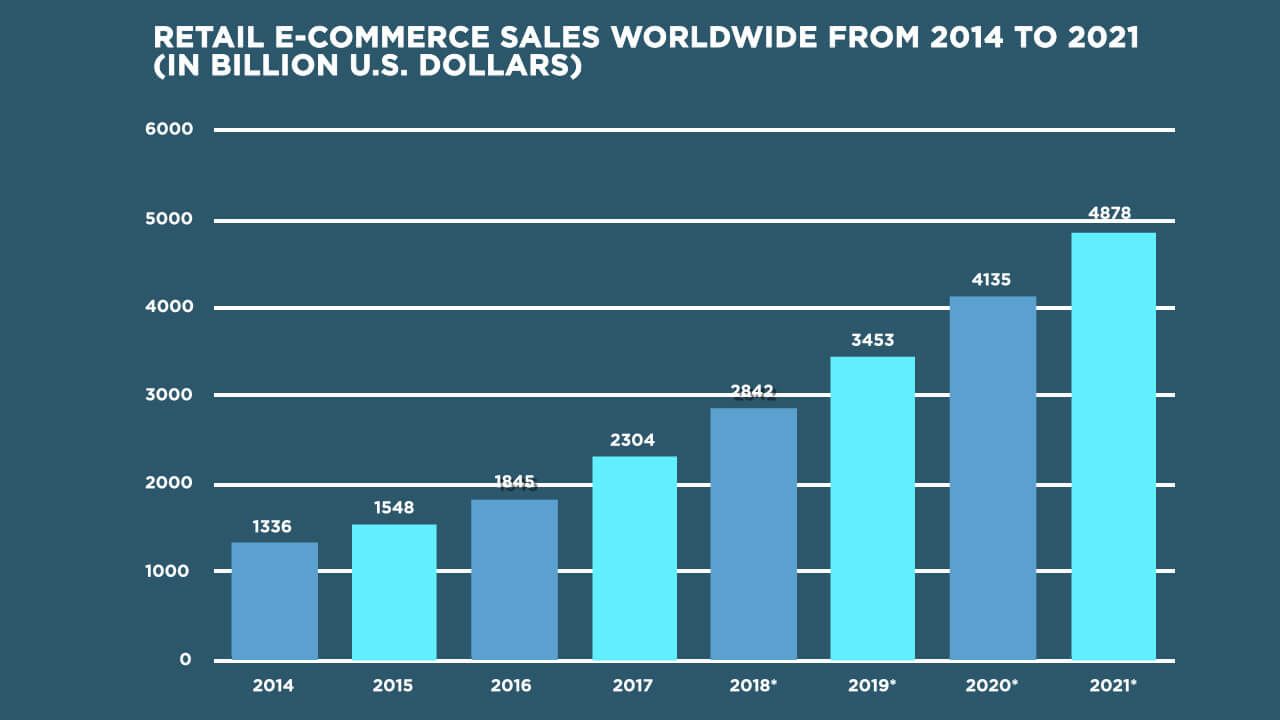
New studies forecast that by the end of 2021, global e-commerce sales will reach $4.9 trillion and make up 17.5% of total retail sales. Statista predicts that these figures will keep growing and reach 22% of total retail sales in 2023.
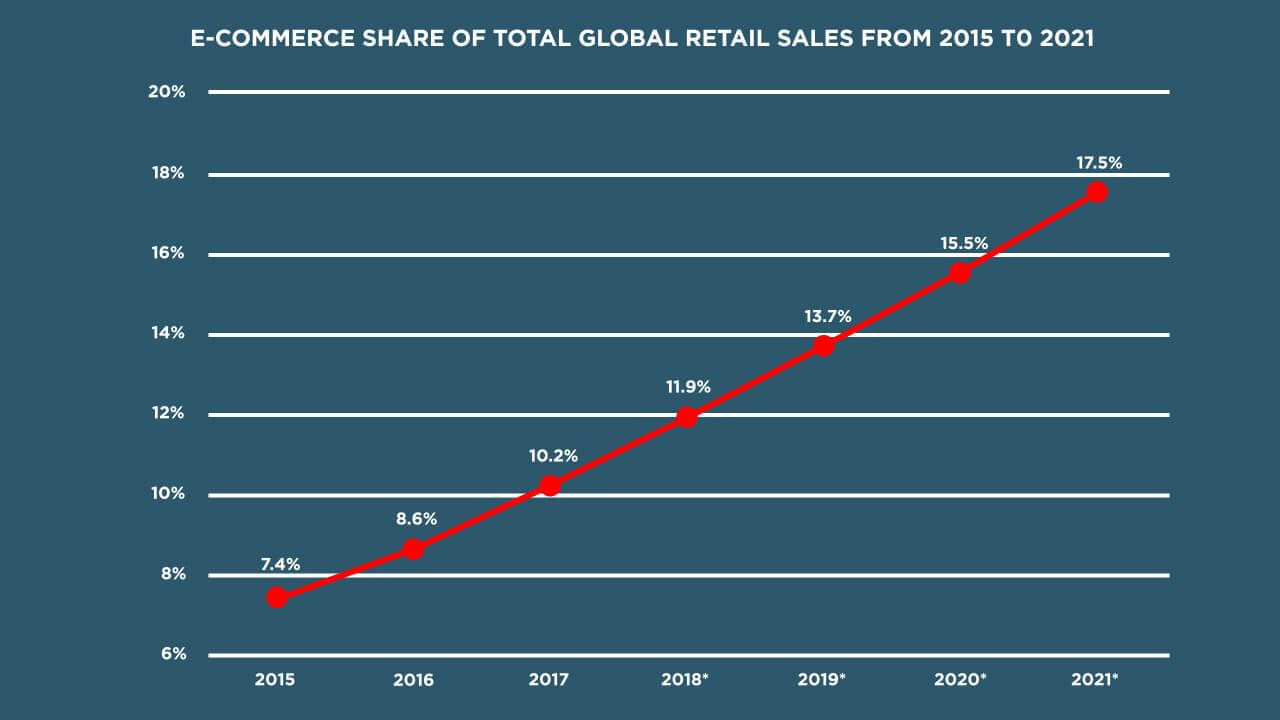
These figures indicate a steady upward trend with no signs of decline. But for business owners, it isn’t as simple as sitting back, relaxing, and watching the money roll in. People’s shopping habits are changing and online competition is increasing. To benefit from the e-commerce boom, online businesses need to keep up with the latest trends and find new ways to develop their brands.
What Are the Benefits of E-Commerce App Development?
Did you ever wonder how a mobile e-commerce app can add value to your business? There are thousands of advantages to having a mobile app for e-commerce websites. Below we’ve highlighted the most significant benefits of e-commerce apps for your business.
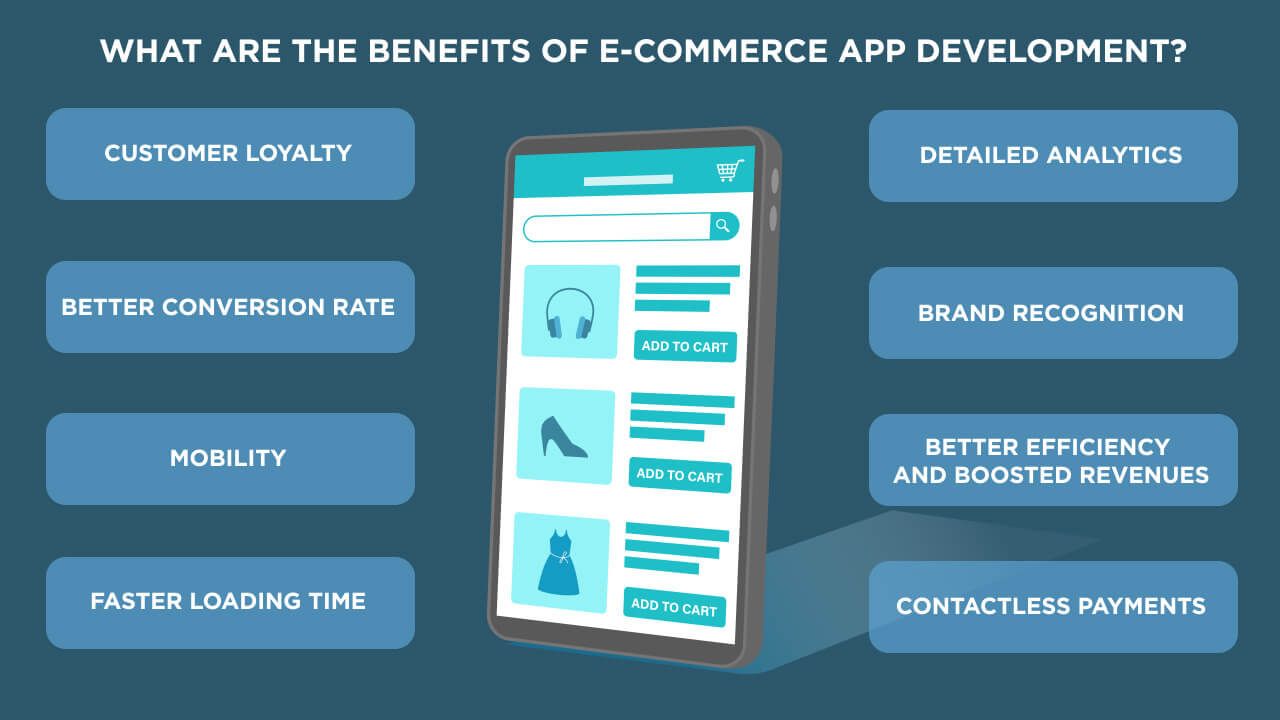
- Customer loyalty. Mobile apps are highly optimized, customized and well-designed. They allow customers to choose and purchase goods without any hassle. This significantly improves the customer experience and facilitates the acquisition and retention of new clients.
- Better conversion rate. Lockdowns and retail closures forced both consumers and the world’s largest retailers online. Customers want to buy a product seamlessly, and you can provide an optimal experience by using a mobile app. Your mobile e-commerce app will drive higher conversion rates.
- Mobility. Consumers may use applications anytime, anywhere, and on the device of their choosing.
- Faster loading time. Every second counts in the retail business. Mobile e-commerce apps load 1.5 times faster than e-commerce websites. So you can delight customers by providing them a seamless experience and saving them time. Note that if the load time exceeds three seconds, customers will likely turn to your competitors.
- Detailed analytics. Shopping preferences and previous orders can be collected and tracked in the app’s storage. You can use this data to personalize client offers, deliver improvements and updates, and build a marketing strategy and promotional campaigns.
- Brand recognition. Mobile apps help brands build their reputation, advertise services, and draw customers’ attention. For instance, you can integrate popular social media platforms into your application to let customers discuss your products. Or you can utilize push notifications to provide your customers with special offers, discounts, and giveaways.
- Better efficiency and boosted revenues. Mobile applications are more flexible and user-friendly than websites. You can be sure that they will quickly pay off and increase sales. There’s a perfectly good explanation for this: a well-functioning app engages more customers who are ready to make an order. As a result, your earnings increase.
- Contactless payments. Covid-19 has forced people to change many of their daily habits. Consumers are taking precautions to avoid getting infected, and mobile contactless payments are the perfect tool for this.
Decide Which E-Commerce Trends Make Sense for Your Business
Why is it crucial to monitor and embrace e-commerce trends? A trend is always the reflection of customer needs. Monitoring trends means better understanding your customers and addressing their needs.
Before you start to develop your next big thing, let’s identify some key e-commerce trends for this year.
Chatbots
HubSpot reported that 47% of consumers would buy items via a chatbot. According to the Salesforce State of Chatbots Report, 69% of consumers prefer to use bots for their speed at communicating with a brand.
Large e-commerce companies such as Nike, Lyft, eBay, and Spotify adopted chatbots for their businesses. This technology allows brands to interact with customers on a round-the-clock basis. Using AI and ML bots, businesses also can receive data about customers to provide them with a personalized shopping experience.
AR Technology
Integrating Augmented Reality allows you to create incredible e-commerce mobile applications that will make you stand out from the crowd.
Using AR, your customers can preview products or experience services before making a purchase. IKEA Place is probably the most well-known AR application in the world. It allows users to see how a given piece of furniture will fit into their environment. IKEA’s online sales have increased significantly in recent years.

Geofencing
Want to reach more local customers and drive them to visit your business? If so, geofencing is an outstanding opportunity to deliver exclusive deals and personalized experiences for customers in a specific area.
For instance, Starbucks uses geofencing to promote drinks to targeted customers. Push notifications are sent when consumers walk by the business or are in the area.

Omnichannel Shopping Experience
Omnichannel retailing means that retailers have both a physical and digital presence. This approach focuses on designing a cohesive user experience for customers at every touchpoint. This differs from traditional marketing, where individual channels were optimized without necessarily taking the whole experience into mind.
An example of the omnichannel strategy is Amazon Go, a cashier-less checkout system at their brick-and-mortar grocery stores. Customers no longer need to wait in line to pay, which makes the check-out process speedier and improves customers’ experience.
One-Click Purchasing
One-click purchasing allows customers to purchase an item on the internet marketplace without using a shopping cart. Instead of manually inputting billing and shipping information for a purchase, a client can use one-click buying to use a predefined address and credit card number.
Shopping Personalization
In 2021, the personalization trend is growing. Many businesses are about to invest heavily into personalized marketing. They aim to examine user data not only from their app but also from a variety of sources such as social networks and messengers. This data is used for various purposes, from sending personalized emails to AI push-notifications that try to predict the product customers will buy next.
Big Data
Using Big Data technology, you can gather valuable insights and forecast e-commerce trends that are only beginning to appear. This technology also allows you to calculate an optimal product price based on your competitors’ prices.
Custom E-Commerce Solution vs. Vendor-Based: Pros and Cons
Which software type best fits your requirements? This is the biggest issue an entrepreneur faces: SaaS or custom development e-commerce software solutions.
Let’s compare the pros and cons of these options so that you can make an informed decision for your e-commerce development app.
| Custom E-Commerce Solution | Vendor-Based Solution | |
| Time to market | The custom e-commerce platform requires plenty of time and human resources. You should identify requirements, find experienced developers, coordinate the software development process, and test for quality assurance. | This solution can be implemented as quickly as possible. You won’t have to deal with the research, development, and testing of the software. |
| Implementation time and cost | Usually, you should outsource software development. | Ready-made solutions allow you to install the e-commerce software fast and start using it right away. You should compare the specific features and pricing of several platforms. |
| Maintenance and upkeep | You should constantly update documentation, maintain the system properly, and further develop it. | Extensive support options for enterprise-level plans. |
| Yearly or monthly licensing fees | No license fees. | You can overspend on an e-commerce solution by purchasing a plan with features you’ll probably never use. |
| Performance risk, architectural deficiencies, bugs | Since developers will be faced with countless issues and challenges, the development process will be lengthy, raising the risk of errors and bugs. | With a vendor solution, you don’t worry about handling security, architectural deficiencies, and bugs. |
| Control of development and features | There are no limitations on how to create an e-commerce app. You can build whatever you want without any extras and customize your e-commerce solution to your business needs. | If your vendor does not provide an integration plugin, or an API, you’ll need to accept set parameters. |
| Scalability and ease of growth | You control development. time and pace, production, and upgrades. | Upgrades cost extra, if available. Customization and updates may not be available, and the platform might not be suitable for your business. |
Now we will focus on pricing issues. You can do some quick math and calculate how much you will pay for using an e-commerce app from a vendor.
For example, the Shopify Plus plan starts at $2,000 a month for standard setups and integrations. So, using that e-commerce app will cost approximately $24,000 per year. Additionally, if you use a third-party payment processor, you will be charged 0.15% per transaction.
Imagine how much money you will spend in 5 years. And this doesn’t ensure that you will get all the options you want. Additionally, there might be features that you don’t use but still have to pay for. The advantage of a custom e-commerce app is having only the necessary functions that you use as well as secure data storage.
Well, this should have satisfied your curiosity. If you want to receive more information about this issue, please do not hesitate to contact us at info@vironit.com.
Now let’s take a closer look at e-commerce app development cost and factors that influence it.
What Influences the Cost of E-Commerce Mobile App Development?
If you are interested in developing a mobile app for your business, you should consider the following points that can determine the cost of e-commerce mobile app development.
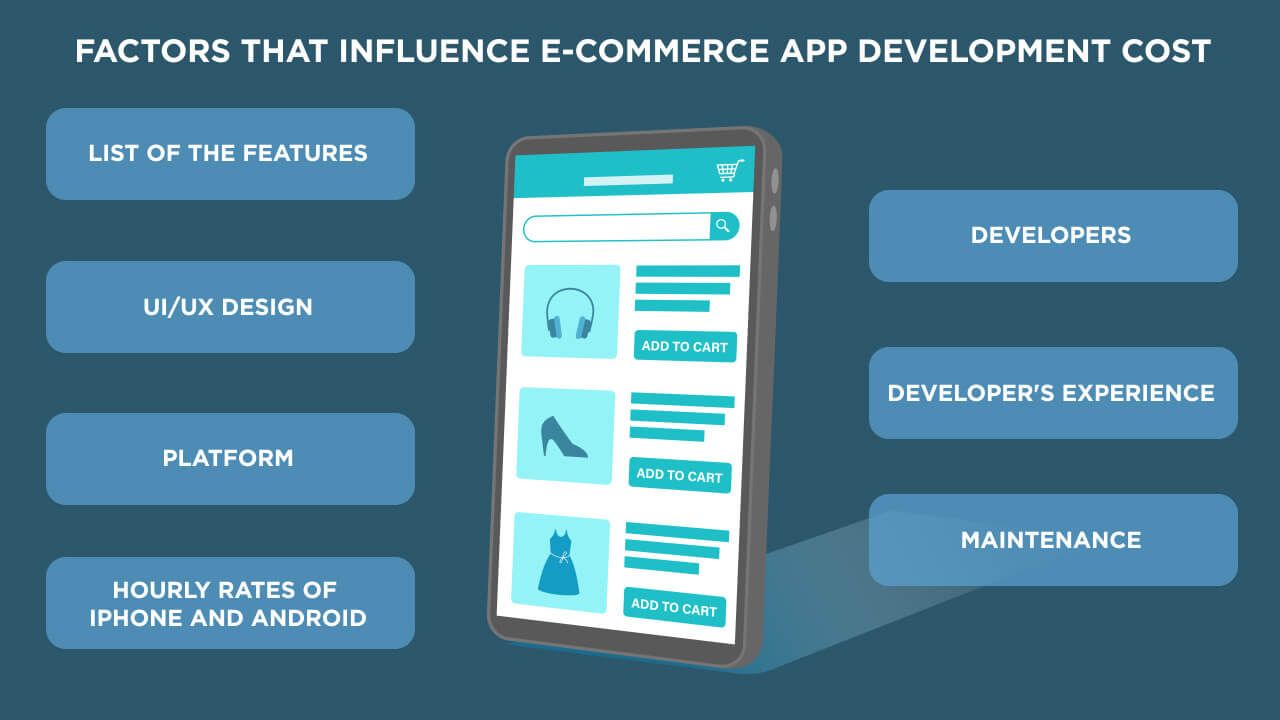
List of Features
A feature list for an e-commerce mobile application usually consists of user login and profile, product catalog and search, and payment gateway.
Additional advanced features include multiple payment options, social media integration, ML-based recommendations, Tinder-like swiping or Instagram-like photo feeds. But note that these additional features might significantly increase the cost of e-commerce mobile app development.
UI/UX Design
The cost of developing the mobile app design may vary depending on the app complexity, the number of screens, and features.
Platform
Since you’re keen on launching a mobile app, one of the most crucial decisions is choosing between native or cross-platform development. The answer to this question depends on your business type and target audience.
Hourly Rates of iOS and Android Developers
It’s important to consider the average hourly rates of iOS and Android developers. Note that location can affect the cost of a mobile app developer. For instance, here’s what it will cost you to hire developers from the following regions:
- The US or Canada: $50 to $250 per hour
- Australia and New Zealand: $50 to $150 per hour
- UK and Western Europe: $35 to $170 per hour.
- Eastern Europe: $20 to $150 per hour
- India: $10 to $80 per hour
And there is another factor—a developer’s experience.
Maintenance
To ensure that your app operates correctly, we recommend that you evaluate the cost of app maintenance. The estimated e-commerce app cost of maintenance is 20-30% of the initial budget. For example, if the e-commerce app development cost is $100k, its maintenance will be at least $20k.
How Much Does it Cost to Develop an E-Commerce Mobile App?
Now that you’ve learned more about the factors that influence app development expenses, let’s look at how much it will cost.
To build an e-commerce mobile app, you’ll need to put together a team of the following professionals:
- UX/UI expert
- iOS/Android developers
- Backend developer
- Project manager
- QA specialist
Considering all these factors and making a rough approximation, the cost to build a mobile app may range from $15,000 to $150,000. If you need something more complex or sophisticated, you should be ready for a big budget.
The total project timeline, depending on the scope of your requirements, can range from 600 to 2500 hours.
Please note, these are approximate figures for making a mobile app and the price cannot be accurately determined without specifications.
Takeaway
E-commerce is an ever-evolving industry that requires keeping up with the latest trends to ensure you’re ahead of the game.
Geographic location, app complexity, and local market conditions can affect the cost of developing an e-commerce mobile application. You will also need to consider the average hourly rates of iOS and Android developers.
If you have an idea to develop a mobile application for e-commerce and improve your business, feel free to contact us. We are glad to share our expertise and provide additional consultation. You can ask your question or send us your message on our contact page or use the chat on the right.




